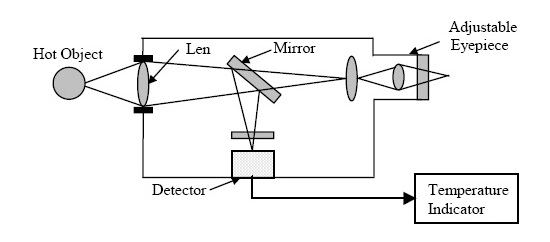ĐẤU NỐI NHIỆT ĐIỆN TRỞ RTD
Cách kết nối đúng cho cả 3 loại nhiệt điện trở RTD ( 2-dây, 3-dây,và 4-dây) với bộ chuyển đổi transmitter được cấu hình phù hợp được hiển thị như các hình dưới đây:
It is critically important to note that the common connections shown by the symbols for 3- and 4-wire RTD sensors represent junction points at the sensor ; not terminals jumpered by the technician at the time of installation, and not internal jumpers inside the transmitter. The whole purpose of having 3-wire and 4-wire RTD circuits is to eliminate errors due to voltage drop along the current-carrying wires, and this can only be realized if the “sensing” wire(s) extend out to the RTD itself and connect there. If the transmitter’s sensing terminal(s) are only jumpered to a current carrying terminal, the transmitter will sense voltage dropped by the RTD plus voltage dropped by the current-carrying wire(s), leading to falsely high temperature indications.
Những quan niệm sai lầm trong cách kết nối RTD không chỉ những sinh viên mà kể cả những chuyên gia làm việc trong công nghiệp cũng thường mắc phải. Thật may mắn vì dưới đây sẽ giúp bạn tránh gặp phải những sai lầm như vậy và quan trọng hơn là giúp bạn hiểu được cách kết nối như thế nào là đúng và tốt nhất.
Những quan niệm sai lầm trong cách kết nối RTD không chỉ những sinh viên mà kể cả những chuyên gia làm việc trong công nghiệp cũng thường mắc phải. Thật may mắn vì dưới đây sẽ giúp bạn tránh gặp phải những sai lầm như vậy và quan trọng hơn là giúp bạn hiểu được cách kết nối như thế nào là đúng và tốt nhất.
Always bear in mind the purpose of a 3-wire or a 4-wire RTD connection: to avoid inaccuracies caused by voltage drops along the current-carrying wires. The only way to do this is to ensure the sensing (non-current-carrying) wire(s) extend from the transmitter terminal(s) all the way to the sensor itself. This way, the transmitter is able to “look past” the voltage drops of the current-carrying wires to “see” the voltage dropped only by the RTD itself.
The following illustrations show both correct and incorrect ways to connect a 2-wire RTD to a 3- or 4-wire transmitter:
Jumpers placed at the transmitter terminals defeat the purpose of the transmitter’s 3-wire or 4-wire capabilities, downgrading its performance to that of a 2-wire system.
A similar problem occurs when someone tries to connect a 3-wire RTD to a 3-wire transmitter using a conveniently available 4-wire cable:
3-wire RTD measurement is based on the assumption that both current-carrying wires have exactly the same electrical resistance. By paralleling two of the four wires in the 4-wire cable, you will create unequal resistances in the current path, thus leading to measurement errors at the transmitter (Note).
Note : These errors will result only if the paralleled wires carry current. If the two wires you paralleled happen to join the transmitter’s sensing terminal to the RTD (the one carrying no current), no errors will result. However, many RTD transmitters do not document which of the terminals sense (carry no current) versus which of them excite (carry current to the RTD), and so there is a probability of getting it wrong if you simply guess. Given that there is no real benefit to having paralleled wires connecting the transmitter’s sensing terminal to the RTD, my advice is to either use all four wires and configure the transmitter for 4-wire mode, or don’t use the fourth wire at all.
Phương pháp giải quyết tốt nhất cho RTD-3 dây và RTD - 4 dây
Better solutions for the 3-wire RTD and 4-wire cable scenario include configuring the transmitter for 4-wire RTD input and actually using all four terminals (như hình bên trái), or keeping the transmitter configured for 3-wire RTD input and not using the fourth wire in the cable at all (như hình bên phải):
Better solutions for the 3-wire RTD and 4-wire cable scenario include configuring the transmitter for 4-wire RTD input and actually using all four terminals (như hình bên trái), or keeping the transmitter configured for 3-wire RTD input and not using the fourth wire in the cable at all (như hình bên phải):








Comments
Post a Comment